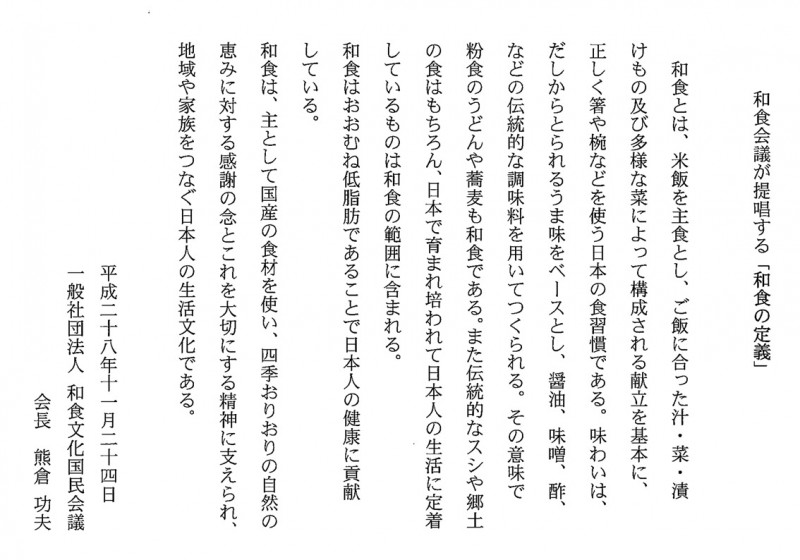Did you know that November 24th is Washoku Day?
On this day, Washoku was recognized by UNESCO as World Intangible Cultural Heritage, along with the subtitle of “ii nihonshoku” or “good Japanese food.” On November 24th, our college, as well as all members of the “Japanese Association for Japanese Food Culture,” submitted a formal definition for Washoku. (We will include the definition at the end of this article.)
Upon a basic reading, our “definition of Washoku” might seem like its stating the obvious, but upon a deeper reading, it reveals the finer innerworkings of Washoku’s complexity.
First, the largest point states, “The basis of Washoku includes rice as a staple ingredient, with many other broths and side dishes eaten with chopsticks.” Based on this definition, things like hamburger steak set-meals and mapo-dofu set-meals fall under the Washoku umbrella. Furthermore, rice topped with various side-dish ingredients (donburi-mono), curry rice, and omurice (omelet rice) can also be considered Washoku.
Additionally, “the umami from dashi, traditionally used seasonings, and funshoku (ingredients made from flour) also count as Washoku under this definition. Soba, udon, okonomiyaki, and Takoyaki are also splendid examples of Washoku. Even more specifically, chicken and pork bone, dashi, soy sauce, miso, salt, and such traditional ingredients used in making broth, as well as noodles made from flour -- all key ingredients in ramen -- make ramen another Washoku dish.
With the introduction of our definition, foods that were in a categorical grey area are now more likely than not to be recognized as Washoku. Washoku has a broad scope, and perhaps not everyone has a crystal-clear idea of what does and does not include. For me, I see Washoku as food culture with Japanese “Wa” influence, made into a delicious meal, “Shoku.”
The most important aspect of our definition is not about discerning which specific dishes can be called Washoku and which cannot. But rather, the last three lines explain it is a meal that, “uses Japanese ingredients,” “cherishes seasonal ingredients and tastes,” and “gives appreciation for nature’s blessings.”
Please, continue to enjoy Washoku while being grateful for the food Earth has granted us.
Source: Tokyo College of Sushi and Washoku: The College Headmaster’s One-Dish Course Series.
https:///www.sushi-tokyo.jp/blog-headmaster
Photo source: Tokyo College of Sushi and Washoku: The College Headmaster’s One-Dish Course Series.
